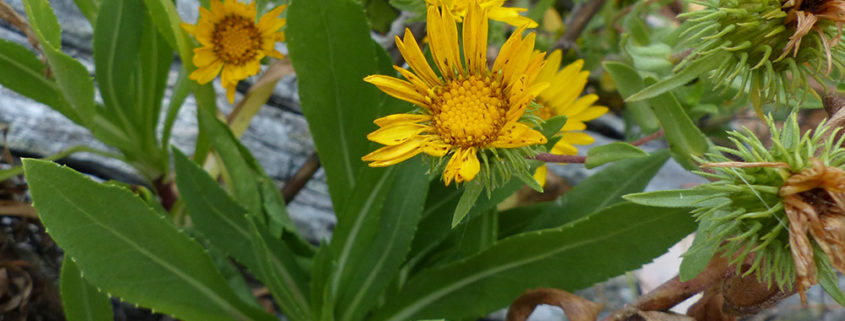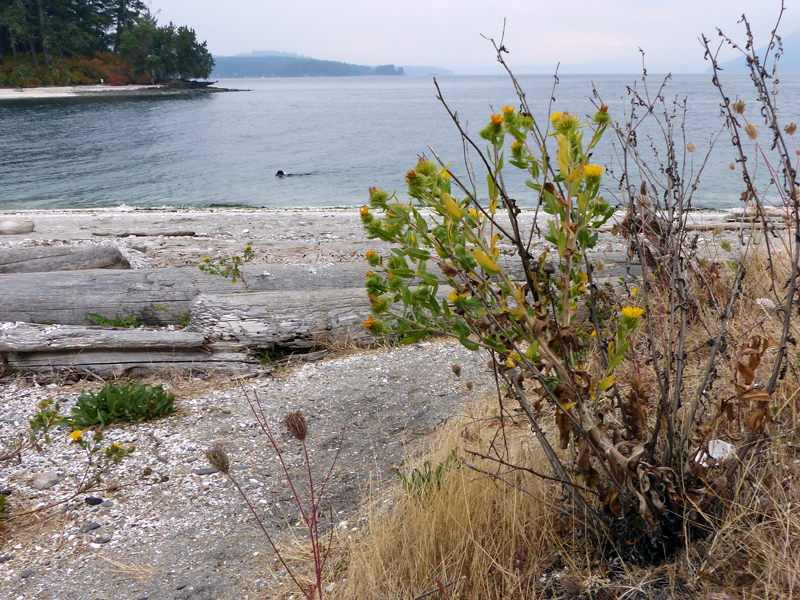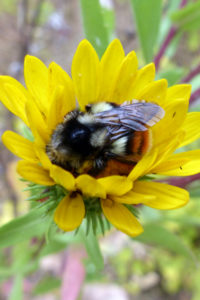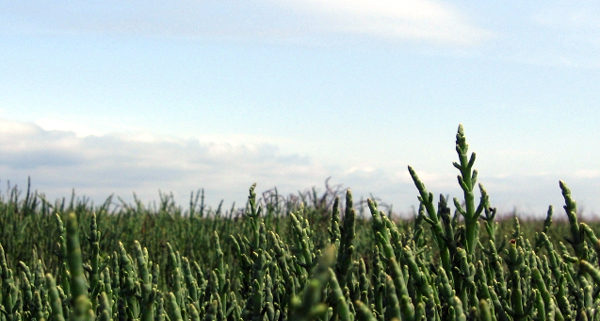Oregon Gumweed
Scientific Name: Grindelia stricta
Author: Jake Duncan
Common Names: Oregon Gumweed, Oregon Gumplant, Coastal Gumplant
Identification: Oregon gumweed is a perennial, dicot flowering herb. It is from the Asteraceae or Compositae family which also includes aster, daisy, and sunflower.
It is a small yellow flower with thick stems that can be hairy, and fleshy leaves. It easily branches out and often grows in a shrub-like formation. The flower head produces large amounts of a gummy white sap (exudate), especially in the early stages of blooming.
Location: This plant grows near water on coastal bluffs, tidal flats, marshes, sand dunes, and sea bluffs. It is native to North America but found mostly throughout the Pacific Northwest and south to California. It is commonly found on many shorelines of British Columbia including the Gulf Islands. This species grows well near coastal sage.
Uses: Throughout history this plant has been used as herbal medicine both by Indigenous people of North America and otherwise. It can be used to treat afflictions of the lungs such as whooping cough, asthma, and bronchitis. It can also be used to soothe insect bites, burns, and rashes caused by poison oak or poison ivy.
References:
(n.d.). Retrieved from http://www.calflora.org/cgi-bin/species_query.cgi?where-calrecnum=3967
(n.d.). Retrieved from https://plants.usda.gov/core/profile?symbol=GRST3
Moore, A. J. (n.d.). Grindelia Stricta. The Jepson Herbarium. Retrieved from http://ucjeps.berkeley.edu/eflora/eflora_display.php?tid=3113
Grindelia stricta. Discover Life. (n.d.). Retrieved from https://www.discoverlife.org/mp/20q?search=Grindelia stricta
Grindelia stricta var. platyphylla ‘Ray’s Carpet’, Coastal Gum Plant, Perennial,. (n.d.). Retrieved from https://www.smgrowers.com/products/plants/plantdisplay.asp?plant_id=4315
Gumweed. (n.d.). Retrieved from http://ravensongseeds.com/herbs/gumweed
Southwest, T. A. (n.d.). Grindelia Stricta, Oregon Gumweed. Retrieved from http://www.americansouthwest.net/plants/wildflowers/grindelia-stricta.html





